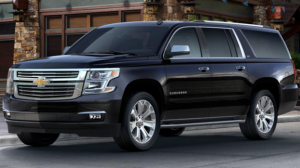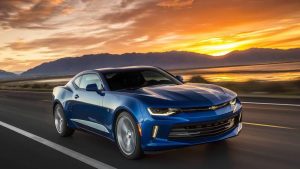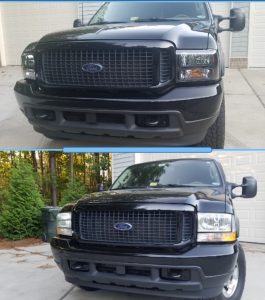Automobile Technology changes the way we drive & survive in Hampton Roads
 Automobile technology is amazing, right! Do we take it for granted? When you consider that New York was the first state to pass a law, which required vehicle occupants to wear seat belts in 1984, yes we do! What was once space technology has become standard in many of today’s base models. Some of these advances are clearly for our comfort, but others are vital for our safety and the safety of our cars. Unbelievably the 2018 Toyota Camry has forward-collision warning, automatic forward braking, pedestrian detection, adaptive cruise control, lane-departure warning, lane-keeping assistance, a rearview camera and automatic high beams standard! Here’s what you can expect in the way of tech features on new and used cars today.
Automobile technology is amazing, right! Do we take it for granted? When you consider that New York was the first state to pass a law, which required vehicle occupants to wear seat belts in 1984, yes we do! What was once space technology has become standard in many of today’s base models. Some of these advances are clearly for our comfort, but others are vital for our safety and the safety of our cars. Unbelievably the 2018 Toyota Camry has forward-collision warning, automatic forward braking, pedestrian detection, adaptive cruise control, lane-departure warning, lane-keeping assistance, a rearview camera and automatic high beams standard! Here’s what you can expect in the way of tech features on new and used cars today.
AVAILABLE SAFETY FEATURES
Front and Rear Park Assist: Active safety technology on the Chevrolet Suburban helps the driver park their vehicle and avoid crashing into nearby objects during low-speed vehicle maneuvering when driving forward or backing.
Rear Camera: You may not know that the first rear view camera was introduced in 1956! A bit bulky with a TV in the dashboard for viewing, but still! Backup cameras have become standard in many cars today like the 2013 Toyota Avalon and 2015 Ford Focus. The 360-Degree parking camera normally reserved for high-end luxury models is also available on a few affordable models like the 2016 Nissan Rogue.
Rear Cross Traffic Alert: The Chevrolet Suburban also has a system that monitors two areas behind you for vehicles approaching from the right or left. Rear cross traffic alert is active once the vehicle is shifted into REVERSE. When backing, you will receive a visual or auditory warning if an approaching vehicle enters the rear cross traffic alert detection areas.
Lane Keep Assist: In addition to lane-departure warning system, the lane-keep assist actively steers a car back into its lane if it detects that the car is starting to drift out. This technology generally offered on high-end luxury cars; is included in the Tech package and Ultimate package of the 2017 Hyundai Elantra.
Adaptive Cruise Control: is a feature that automatically slows down or speeds up your car to keep you a safe distance from the vehicle in front of you.
Blind Spot warning System: The Chevrolet Suburban also features a blind spot warning system can “see” what the driver cannot and issue a visual or audible warning if it is unsafe to make a lane change
NEW TECHNOLOGY SAFETY SYSTEMS
- Pothole Protection: This feature is available on the 2018 Ford Fusion V6 Sport. When the system detects one wheel, dropping into a hole in automatically adjusts the shock absorber to minimize the impact. This not only creates a smoother ride but can protect your car from damage and from an accident or blowout.
- Automatic Reverse Emergency Braking: You probably know about forward emergency braking. The 2018 Subaru Legacy has a system that works in tandem with rearward monitoring alerts and will automatically apply the car’s brakes to avoid a rear collision.
- Intelligent Forward Collision Warning: The system available on the Nissan Altima for 2019 not only monitors the car in front of you, it also monitors the cars in front of the car in front of you!
- Automated Parallel-Parking Systems: This is available on vehicles as affordable as the Chrysler 200 midsize sedan. These systems can steer for you! Just shift and control braking until your car is parked.
- Evasion Aid: The forward-facing camera detects a potential impact situation, and the driver begins to make an emergency-steering maneuver, the Evasion Aid can help guide the automobile safely into one of those spaces. Evasion Aid is available on the 2018 BMW 5 Series.
SAFETY FEATURES FOR EVERYONE
It’s vital that you purchase the safest car possible within your budget. Here are www.autobytel.com’s list of very important safety features to look for in your next automobile.
- Strong Crash Test Ratings
- LATCH Anchors – know how to use LATCH and to make sure the straps used with the metal anchors are fastened as tight as possible.
- Stability Control – different from traction control, Stability control helps to keep a vehicle under control if it skids or slides.
- Reverse Camera
- Blind Spot Warning System (See Inventory)
- Forward Collision Warning with Autonomous Braking – the vehicle can determine situations in which your car may collide with traffic ahead, sound an audible and visual alert of some kind, and if you fail to respond can automatically apply the brakes.
- Emergency Response and Rescue Service
- Programmable Safety Features – programmable features that are designed to help monitor your child’s driving and report back to Mom and Dad about inappropriate use of the vehicle.
- A Safe Driver – No substitute for this one!
This is just a sampling of the safety features available to us due to recent technology advances. Take time to research the car that you plan to buy and see what if offers; if you’d like more options, call or text (757) 560-4252 and ask for Mike Love. I can help you find the vehicle that you want with the features that you need!
Follow TM Auto on Facebook for inventory updates! NEXT MONTH – Automobile Tech Luxury
Sources:
https://www.autobytel.com/car-buying-guides/features/10-cars-with-the-best-safety-features-132646/
https://www.autotrader.com/best-cars/7-advanced-safety-features-you-can-get-not-so-expe-254180



 Truth is you can relax; most people aren’t really ready for the new year. In fact, only about 30% of New Year’s resolutions make it past January. One half fails completely, so the competition as we know it is a bit weak. Your chances of beating your neighbor’s record are pretty good, even better if you have a better plan.
Truth is you can relax; most people aren’t really ready for the new year. In fact, only about 30% of New Year’s resolutions make it past January. One half fails completely, so the competition as we know it is a bit weak. Your chances of beating your neighbor’s record are pretty good, even better if you have a better plan. Ok, let’s say you’ve had a car accident, thankfully no one was hurt! Oh, actually, your car is hurtin’ pretty bad and you think it might be totaled; sadly, this is often the case. Is it really totaled? Well let’s see, did the airbag deploy? Is there damage to more than one side of your car? Is it driveable? If one or more of these answers is ‘yes’, it is safe to say it’s totaled. Depending on your situation, this could be good or bad but either way you need to get educated. So how do insurance companies determine whether your car is a total loss?
Ok, let’s say you’ve had a car accident, thankfully no one was hurt! Oh, actually, your car is hurtin’ pretty bad and you think it might be totaled; sadly, this is often the case. Is it really totaled? Well let’s see, did the airbag deploy? Is there damage to more than one side of your car? Is it driveable? If one or more of these answers is ‘yes’, it is safe to say it’s totaled. Depending on your situation, this could be good or bad but either way you need to get educated. So how do insurance companies determine whether your car is a total loss?

 Can one have too many cars? Well, as a used car dealer my knee jerk reaction is…, never! I mean I have around 20-30 at all times and seldom drive the same one two days in a row, it’s great! Ok, I get that I might possibly be a little tiny bit bias but still, is that something that people are concerned with? Should we be considering the risks of owning too many cars or is there even such a thing?
Can one have too many cars? Well, as a used car dealer my knee jerk reaction is…, never! I mean I have around 20-30 at all times and seldom drive the same one two days in a row, it’s great! Ok, I get that I might possibly be a little tiny bit bias but still, is that something that people are concerned with? Should we be considering the risks of owning too many cars or is there even such a thing? These are all great points to research and consider before pulling the trigger on your next ride. Now, what about resale? That’s right, sooner or later you’re going to sell, and getting the most for your car is just smart business! Why not consider its resale now while you’re looking and make it easier on yourself down the road? With a little used car savvy you can do just that. According to Philip Reed, senior consumer advice editor at Edmunds.com and
These are all great points to research and consider before pulling the trigger on your next ride. Now, what about resale? That’s right, sooner or later you’re going to sell, and getting the most for your car is just smart business! Why not consider its resale now while you’re looking and make it easier on yourself down the road? With a little used car savvy you can do just that. According to Philip Reed, senior consumer advice editor at Edmunds.com and With the exception of an occasional cold day, the end of winter is in sight and the sun is finally peeking through the clouds! We’ve had a long, cold winter and now we can all look forward to hanging up our coats and unpacking our tees! This change in the weather brings big changes in our lifestyles too. More time outside, exercise, fresh air, and lots more fun are on tap for the coming months!
With the exception of an occasional cold day, the end of winter is in sight and the sun is finally peeking through the clouds! We’ve had a long, cold winter and now we can all look forward to hanging up our coats and unpacking our tees! This change in the weather brings big changes in our lifestyles too. More time outside, exercise, fresh air, and lots more fun are on tap for the coming months!
 Who doesn’t love coming home to a tree full of presents? There’s a special kind of mystery inside carefully wrapped boxes with bows on top. The labels may say ‘
Who doesn’t love coming home to a tree full of presents? There’s a special kind of mystery inside carefully wrapped boxes with bows on top. The labels may say ‘